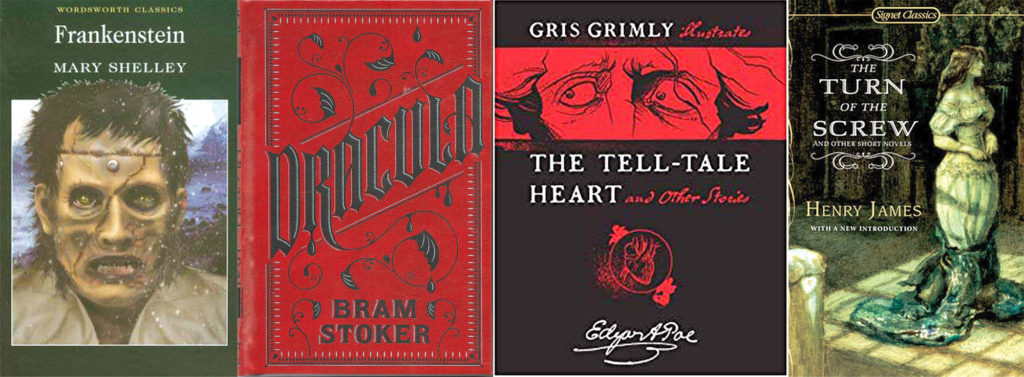 While television and film are ripe with spooks and scares, let’s not forget where original trick-or-treat tales came from: literature.
While television and film are ripe with spooks and scares, let’s not forget where original trick-or-treat tales came from: literature.
Gothic fiction runs the gamut from classic novels and short stories to magazines like Fangoria, the likes of which youngsters have subscribed to for years, eagerly anticipating a shriek or spook with the turn of a page.
If getting scared via the written word is your choice of poison, give these classics a read this Halloween season.
Frankenstein
Mary Shelley’s 1818 novel Frankenstein; or, The Modern Prometheus tells the story of Victor Frankenstein, a young scientist who creates a hideous, yet intelligent creature in an unorthodox scientific experiment. Perhaps the biggest pet peeve of readers is those who believe the monster is Frankenstein (large, square head; discolored skin, neck bolts and all), whereas the doctor holds the moniker. The Gothic novel recounts Frankenstein’s narrative as well as the creature’s, in a story that is both remorseful and suspenseful.
The Turn of the Screw
Classified as both Gothic fiction and a ghost story, Henry James’ 1898 horror novella The Turn of the Screw focuses on a governess who, while caring for two children at a remote estate, becomes convinced that the grounds are haunted. With the power to create an intimate sense of confusion and suspense within the reader, the story has been adapted in several different media formats.
Dracula
The original vampire tale and presumably dark lord of Halloween, Dracula was published in 1897 by Bram Stoker. It introduced Count Dracula and his attempt to move from Transylvania to England so that he may find new blood and spread the undead curse. The novel also tells the tale of the battle between Dracula and a small group of men and a woman led by Professor Abraham Van Helsing. It is a quintessential horror classic to read this Halloween.
The Tell-Tale Heart
No one does mystery and macabre better than Edgar Allan Poe. In 1843, the American writer published the short story “The Tell-Tale Heart,” a perennial favorite of many readers. The story is relayed by an unnamed narrator who attempts to convince the reader of his sanity while simultaneously describing a murder he committed. Can you hear the dead man’s heart beating from under the floorboards?
































